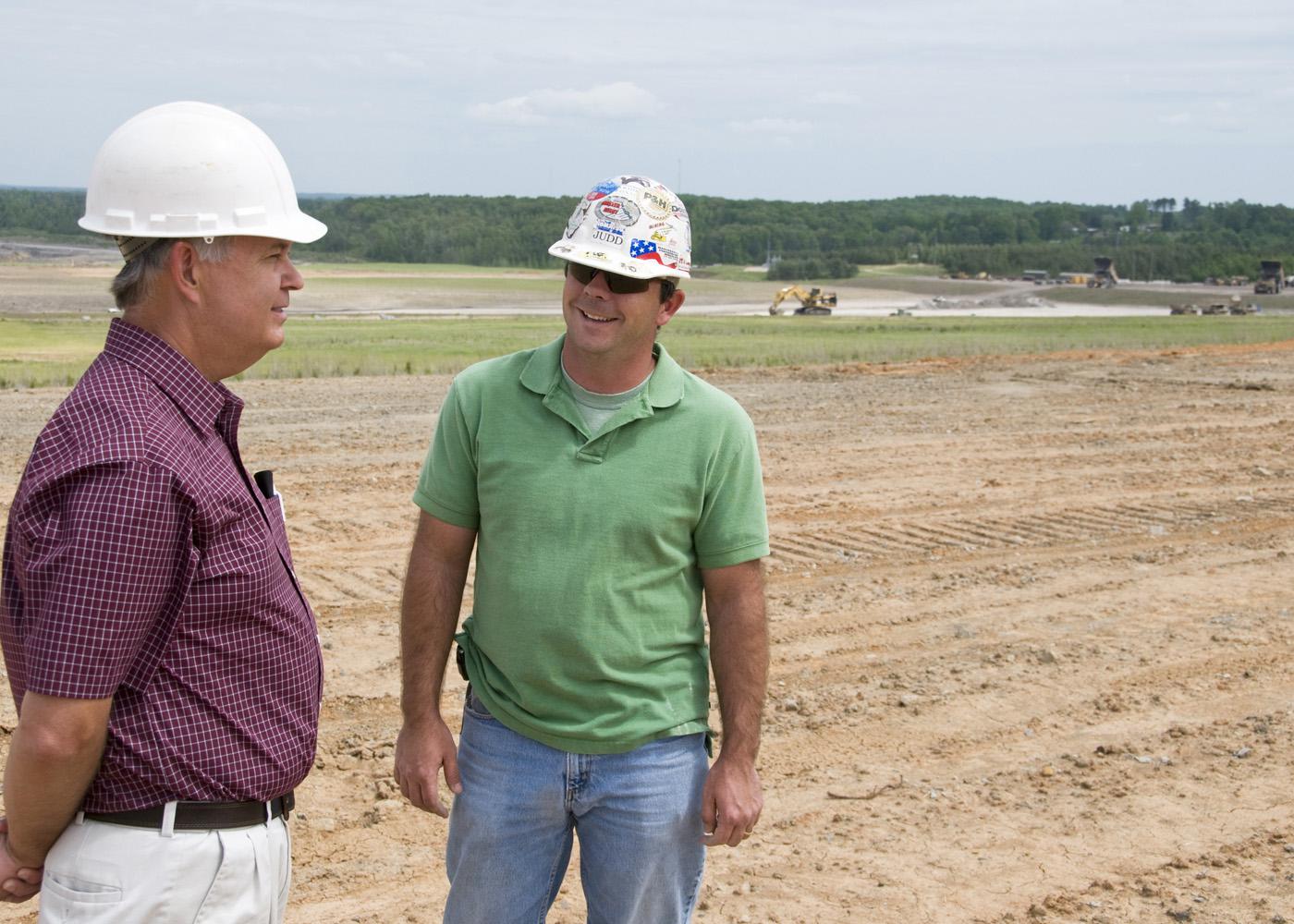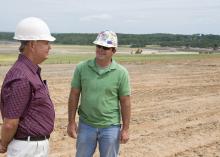Information Possibly Outdated
The information presented on this page was originally released on April 30, 2009. It may not be outdated, but please search our site for more current information. If you plan to quote or reference this information in a publication, please check with the Extension specialist or author before proceeding.
Land reclamation can beautify coal mines
MISSISSIPPI STATE – It has been decades since surface coal mines left land scarred and bare, and expertise from Mississippi State University is helping the lignite mine in Choctaw County leave the land in even better shape than it was before.
North American Coal Corporation’s Red Hills Mine is a 5,800-acre surface coal mine, commonly called a strip mine. Gently rolling hills covered by pastureland and pine forests are replacing what recently was an open pit where the coal was mined. The land was mostly undeveloped forests, some of which were growing on land exhausted years ago by extensive row crop farming.
“The Red Hills Mine is very different from the Appalachian strip mine concept,” said David Lang, an agronomist with the Mississippi Agricultural and Forestry Experiment Station.
Lang has been working with the Red Hills Mine for five years conducting research on suitable topsoil substitute materials and verifying the productivity and restoration of the land. Much of his work is making sure that the reclaimed land is suitable for future use and the soils are capable of sustaining the desired plant life.
The mine itself is a 200-plus-foot-deep pit that uncovers six layers of coal in the hilly region near Ackerman in north central Mississippi.
“Mining is a constant process of digging the coal out and putting the earth back in the hole,” Lang said.
Reclamation is the process of restoring the land to its original or better shape once the coal has been removed.
In areas where prime farmland soil exists, the topsoil extends only about 1 foot deep, and this layer is carefully removed and set aside. The next 10-20 feet is oxidized, red sandy-loam subsoil that is common in this part of the state and can sustain healthy pasture and forest growth. Below that is the gray interburden, the material that surrounds the layers of coal.
The red, sandy subsoil and the gray interburden are hauled in a continuous process from where they are dug out of the ground to the other end of the pit where land is being reclaimed. Once all the coal is removed from an area, the gray interburden is placed first in the hole, filling it to within about 4 feet of its previous level. Red, sandy subsoil fills in the rest.
“The red, oxidized material becomes topsoil if the land was not already prime farmland,” Lang said. “If it was prime farmland, they put back the topsoil. The goal is to restore the land to equal or better productivity.”
The area is reshaped to approximate the original contours of the land, being careful to create gently rolling hills rather than the steep, unusable slopes previously found in many areas.
“They take out 12-20 feet of coal in those six layers, so you’d think that would lower the land, but the elevation is actually higher afterward because the soils are not as compacted as before,” Lang said. “The land is much more useful after it has been mined and reclaimed.”
Ownership of the land remains with the original landowners, and the Red Hills Mine pays for their mineral rights through royalty payments for coal that is mined from their land.
“At the end of the time period, Red Hills Mine will have restored whatever they asked for in the original contract,” Lang said. “Most landowners have asked for pastures or pine plantations.”
Judd Sanborn, environmental specialist with Red Hills Mine, said the reclamation work is an attempt to do what is best for the landowners who leased to the coal company.
“We want to make sure we get the right soil back on top that will benefit the landowners for what they want to grow,” Sanborn said.
Lang’s responsibility with the Red Hills Mine includes vegetation monitoring, soil sampling and productivity verification.
“Mississippi State is a credible third party. Even though you can come to our mine and look for yourself, it always seems better when a third party says it’s OK,” Sanborn said. “We have done land reclamation before, but there may be concepts out there that we don’t know about. Our partnership with Mississippi State keeps us current with any new and better ways of doing things.”
Sanborn said the company mines and reclaims between 100 and 120 acres a year. As stated in the contract landowners signed before the work began, landowners lose access and control of their property for 10-12 years, but they regain their property with established new growth.
“Before mining, we send out landowners’ preference statements that say we will reclaim your land to loblolly pine forest with wildlife habitat,” Sanborn said. “If landowners want something else, they tell us. The vast majority of the mine area will be pine plantation when we’re finished with it.”
The Department of Environmental Quality regulates the mining and land reclamation process. Sanborn said the mine is required to maintain the trees for seven years before returning control of the property to the landowners.
“We have to reach certain tree and ground cover counts per acre, and we have to submit this information to DEQ,” Sanborn said.
In addition to his work establishing loblolly pine plantations, Lang’s research also focuses on the successful establishment of Bermudagrass for pastures and ground cover.
“My data indicates that the Red Hills Mine is meeting and exceeding standards for Bermudagrass productivity and ground cover, including a number of volunteer native species and tree establishment,” Lang said. “A healthy ecosystem is being reestablished.”





